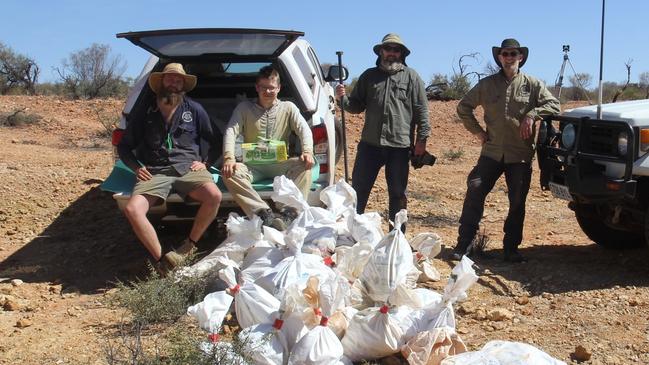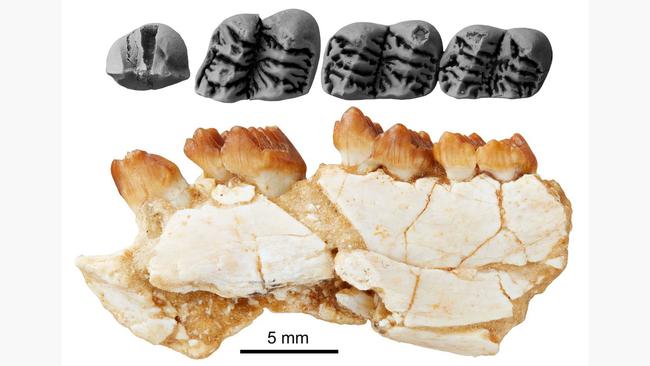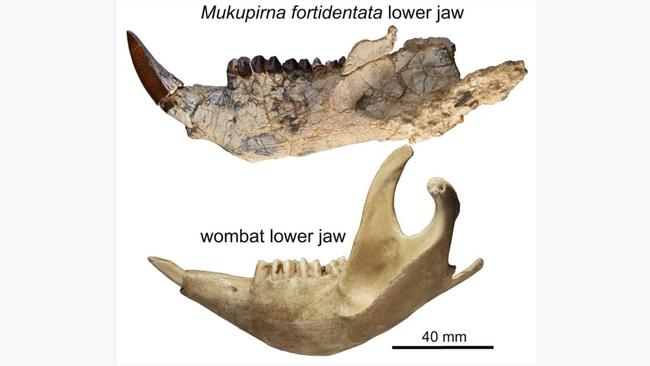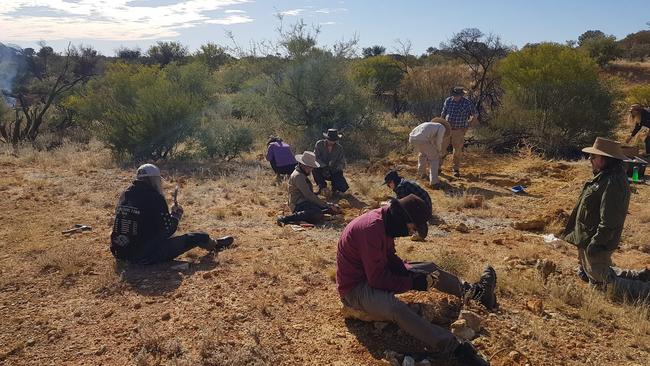Teeth and jaw fossils offer glimpse into NT’s ancient animal kingdom
Palaeontologists have discovered ancient fossils south of Alice Springs and identified two new species. Find out about the mystery here.

News
Don't miss out on the headlines from News. Followed categories will be added to My News.
A possum with teeth best described as a “dentist’s nightmare” and a wombat’s kooky relative could be key to filling gaps in the NT’s wildlife history.
Palaeontologists found 25 million-year-old fossils in Pwerte Marnte Marnte – south of Alice Springs – that offer key insights into the lives of some of the NT’s ancient animals.
Flinders University PhD candidate Arthur Crichton said the “curious beasts” were from marsupial lineages with no modern descendants.
“Learning about these animals helps put the wombat and possum groups that survive today in a broader evolutionary context,” he said.

Mr Crichton said one of the newly discovered species revealed by the fossils was an early possum called Chunia pledgei.
“(It) has teeth that are a dentist’s nightmare,” he said.
“Unlike other ektopodontids (an extinct possum family), fossils from the new species reveal that it had pyramid-shaped rather than bladed cusps near the front of its mouth.
“This adaptation might have been useful for puncture-crushing hard food items — a bit like a nut-cracker.
“Unfortunately, ektopodontids are tantalisingly rare in the fossil record, known only from isolated teeth and several partial jaws.
“We know that these animals had a lemur-like short face, with particularly large forward-facing eyes, but until more complete skeletal material is known, their ecology will likely remain mysterious.”

Mr Crichton said the fossils also revealed a distant wombat relative packing a powerful bite.
”We discovered 35 specimens, including a partial skull and several lower jaws, from an animal that would have looked a bit like a modern wombat crossed with a marsupial lion,” he said.
“Its front teeth, for example, were large and spike-shaped.”
Mr Crichton and his fellow researchers estimate the beast – named Mukupirna fortidentata -would have weighed in at 50kg, making it one of the biggest marsupials at the time.

Mr Crichton said the fossils were a remarkable find but did not come close to bridging the country’s historic knowledge gap.
“What remains astonishing is just how little we know about the origins of Australia’s living animals, owing in no small part to a 30-million-year gap in the fossil record – half the time between now and the extinction of the dinosaurs,” he said.
“At the same time, it’s inspiring to think about the countless strange and fascinating animals that must have once lived on this continent.
“Fossil evidence of these creatures may still be sitting somewhere in the outback, waiting to be discovered.”
Mr Crichtan said the Mukupirna and Chunia were the first animals at the site to be officially named, but he expected almost all the fossils to come from unidentified species.
“I’m currently studying fossils from some of the curious critters, including an animal that was something like a koala crossed with a wombat, from the extinct marsupial family Ilariidae,” he said.
More Coverage
Originally published as Teeth and jaw fossils offer glimpse into NT’s ancient animal kingdom




